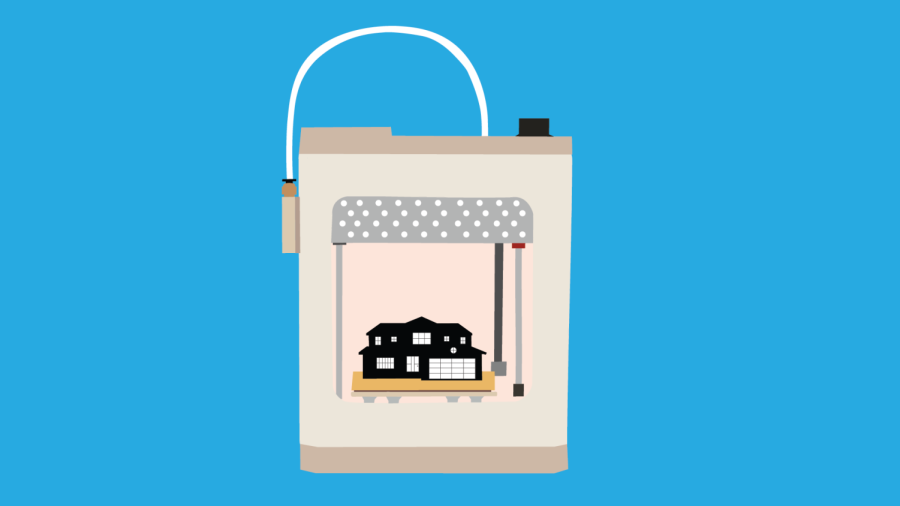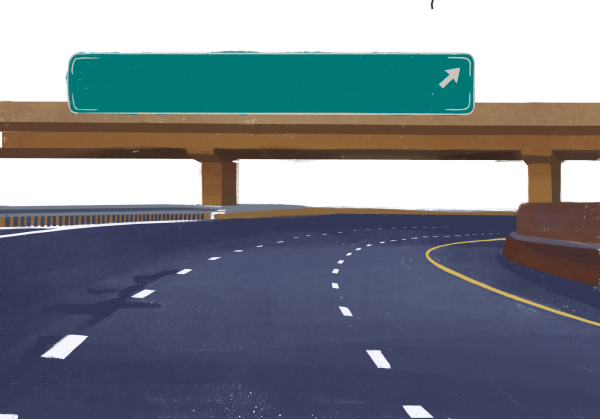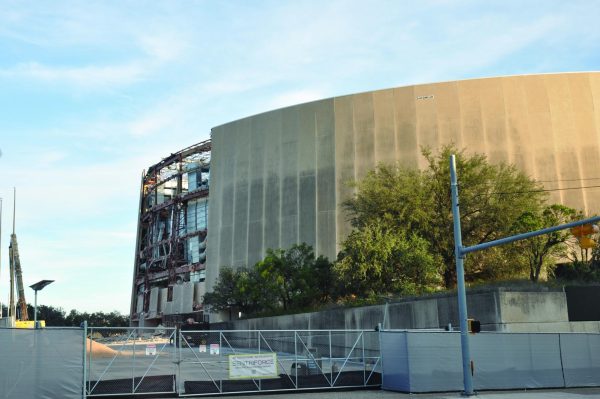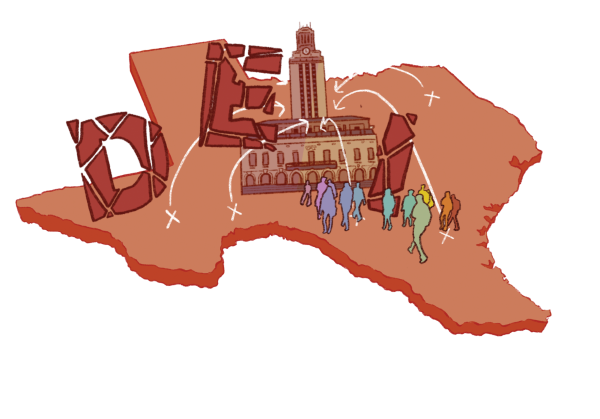3D Printing Technology Builds New Homes
May 15, 2023
Home companies are utilizing new 3D printing technologies to meet demands of growing cities in America, according to the Economist. One example can be seen in Austin, where some of the first 3D printed homes were built by ICON, a company specializing in this kind of construction. An entire suburb north of Austin will be constructed entirely with 3D printing by ICON in the future. This method of constructing buildings is currently being tested by companies around the world to see if it can be more efficient and affordable than traditional homebuilding.
The architectural firm Lake Flato constructed one such home on a plot east of Downtown Austin. Lewis McNeel is a member of the firm and worked on the design of the house.
“Designing with [3D printing] is fairly similar to a traditional house design process, just learning a new construction process with new rules, and learning the parameters of a new material,” McNeel said. “If you can learn and follow new rules, you can design with 3D printing.”
The new technology is limiting, though, and only certain kinds of buildings in certain locations can be constructed with a 3D printer. According to McNeel, the firm didn’t run into any major issues while constructing the house, opening up speculation regarding further design opportunities.
“3D printing should be put to use to build more dense and more diverse housing options like multi-story apartments and to enable those projects to be built faster, cheaper, and with higher quality,” McNeel said. “The printing technology will get there soon enough to help build multi-story buildings, enabling walkable, transit-oriented urban density everywhere. For now, single story printing is what’s being tested out most heavily.”
Arami Rosales is a SciTech teacher at LASA and works with 3D printers in her class. According to Rosales, there are a lot of things that set normal-scale and house building printers apart.
“The largest difference between a traditional 3D printer and one capable of printing buildings is the scale,” Rosales said. “Typical hobbyist material extrusion 3D printers have print beds and can only print shorter structures. For instance, the 3D printers we use in SciTech have a print volume of 150 by 150 by 150 millimeters. The 3D printers used to create concrete houses are huge with a build volume of 10 by 38 by 100 feet. Additionally, instead of using spools of PLA filament, like we do in class, these 3D printers extrude concrete.”
While the technology behind it is an aspect of the push for 3D printed buildings, sustainability and city design come into question. Jacob Wegmann is a professor at the University of Texas and specializes in city planning.
“Conventionally, sustainable architecture means that the building is designed in different ways to minimize energy usage, whether that’s the energy that’s embodied in the materials or the construction…” Wegmann said. “I think sustainable architecture, in some cases, has come to be a symbol of gentrification. I think that is just because gentrification happens, and it’s often accompanied by new construction.”
According to Wegmann, with the potential that it has, 3D printing may become more and more popular over time. The effects of this building method on a larger scale are still unknown.
“I think we just don’t know what potential this technology has,” Wegmann said. “Is it solving any real problems? The technology is predicated on building houses in concrete… What’s the carbon footprint of building houses out of concrete? How does that stack up, or may there be other savings that are happening as a result of using 3D printed houses that perhaps offset some of the increased carbon intensiveness of using concrete?”










